A History of Genetics Research & Education at UConn Storrs
Researched and written by Anthony Sposato (CLAS MCB/English, 2016)
Edited by Professor Barbara Mellone
The Early Years
During the early 20th century, the University of Connecticut, then the Storrs Agricultural School, and later the Connecticut Agricultural College, was at the forefront of the study of genetics in the United States. The success of these early years can be attributed to the equal parts prolific and eccentric scientists, Albert F. Blakeslee, Walter Landauer, LC Dunn, and Edmund W. Sinnott. These Jacks-of-all-trades brought expertise in zoology, art, education, statistics, anthropology, philosophy, botany, and—of course—genetics to UConn, which culminated in groundbreaking research and progressive teaching methods. In fact, in 1913 the Connecticut Agricultural College offered one of the first college genetics courses in America. In 1914, it was decided that genetics was so important that they made the course required for all juniors. All the while, pioneering research was being performed on squash heredity, jimson weed genetics, and mutations in poultry, just to name a few (Issues and Reviews in Teratology Vol. 7 pg. 225, 227).
Albert F. Blakeslee: educator, jimson weed researcher, and UConn’s first geneticist
Albert Francis Blakeslee is one of the most influential early geneticists in America and certainly one of the most forward-thinking educators and scientists at the University of Connecticut. Blakeslee was born on November 8, 1874, and grew up in East Greenwich, Rhode Island. Upon graduating from East Greenwich Academy, he entered Wesleyan College, where he was recognized for his athletic and academic prowess. After graduation, he followed in his father’s footsteps and, for three years, taught at preparatory schools. However, Blakeslee felt his own education was not complete, and he went back to school, pursuing graduate work at Harvard. There, he conducted research that set the tone for the rest of his career. He studied fungi, namely the sexual processes in Mucors (bread molds). At this time it was thought that Mucors were homothallic, i.e. they only had a single mating type; Blakeslee discovered that, in fact, two mating types were required for successful reproduction. His discovery of this phenomenon, which he called heterothallism, cemented his place in the scientific community, even though he was still only a graduate student. In fact, his discovery was so influential that the fungi, Phycomyces blakesleeanus and Blakeslea trispora, were named after him. He graduated with a Ph.D. in 1904.
In 1907, Albert F. Blakeslee accepted a professorship at the Connecticut Agricultural College (CAC), where he would become the school’s first true geneticist. Here, he was
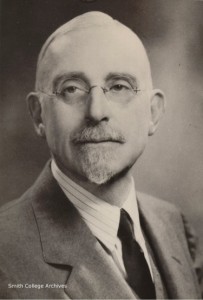
Source: Smith College Archives
able to continue with his research, for which he had immense passion, but was also able to pursue his first true love, teaching. While at the CAC, he focused primarily on the genus Datura (or the jimson weed), because, as Blakeslee said, “[it was] the very best plant with which to discover the principles of heredity.” His description seems apt, as Blakeslee had great success with this “thorn apple.” Notably, he used the microtubule depolymerizing drug, colchicine, to increase the number of chromosomes, creating plants that were polyploid and aneuploidy and studying phenotypic effects associated with polyploidy, opening up a new field of research on dosage compensation.
It is difficult to pigeonhole Blakeslee as just a geneticist because he wrote about and studied many diverse subjects. One he was particularly passionate about was pedagogy. His thoughts on the topic were unconventional, to say the least, as evident in the title of his article “Teachers Talk Too Much,” and also in his idea to create a school where only twins attended, for use in studies of heredity. His unorthodox theories on education are exemplified in his well-known phenylthiocarbamide (PTC) lecture, during which he actually handed out PTC (a substance that some find tasteless and others find bitter) for audience members to try.
Blakeslee also had a love for all things bell-curved. In 1914, he took a famed photograph of 175 students lined up by height, which resulted in a fairly normal distribution. Some 80 years later, Professor Linda Strausbaugh remade Blakeslee’s photograph, but this time with both male and female students. As seen in the photographs (both pictured below), the men are significantly taller in the latter, consistent with the fact that height in humans has been increasing over recent decades. Blakeslee also worked with other methods to model the bell-curve. For example, he built a device down which he rolled beans. Once the beans got to the bottom of this device, which was simply an inclined piece of wood with slots at the bottom, they would be stacked in these slots in essentially a normal distribution.
Blakeslee left the CAC in 1915 to pursue further research opportunities. He found a home at Cold Spring Harbor, and he worked here until his retirement in 1941. Later he would accept a professorship at Smith College, allowing him to teach once more and to continue with some of his research.

Source: “Birth Defects, Jimson Weeds and Bell Curves”

Source: “Birth Defects, Jimson Weeds and Bell Curves”
Leslie Clarence Dunn: scientist-activist and poultry geneticist
Another prominent early figure in genetics research and education in America was Leslie Clarence Dunn. He was born on November 2, 1893, in Buffalo, New York. He spent his early years in the garden with his grandmother, where his interests in botany were first excited. His high school teacher, Dr. Marie Walcott, expanded his interests from mere observation to taxonomic botany. By the time Dunn matriculated to Dartmouth College in 1911 to study zoology under Professor J.H. Gerould, he already had some awareness of biology’s scope and beauty.
But we can thank Professor Gerould for steering the young scientist towards genetics in particular. In 1914 Gerould gave Dunn a book titled Heredity and Sex, which greatly piqued Dunn’s interests. Further cementing this interest, Gerould established a small group in which they would discuss some of the works of seminal geneticists, including R.C. Punnett and T.H. Morgan.

Source: “Leslie Clarence Dunn, a Biographical Memoir”
After Dunn graduated from Dartmouth, he attended graduate school at Harvard to study genetics. Here, Dunn began studying sex-linked genes in Drosophila, but when one of T.H. Morgan’s students published findings similar to his, he moved on to study sex-linked genes in mice and rats. At the onset of World War I, Dunn took a hiatus from his research and enlisted in the United States Army, where he was eventually promoted to First Lieutenant. He returned to Harvard in 1919 to continue his research.
Upon graduation, Dunn accepted a position at the Agricultural Experiment Station at Storrs, where he would once again switch his organism of interest, this time to the chicken. During his eight-year stint, he published 49 papers on the subject. He studied the correlation between egg weight and hatchability, the effects of inbreeding, and many other aspects of poultry genetics. His work with hatchability was particularly compelling. He conducted over 3,000 postmortems and determined that hatchability, i.e. the ability for chicks to hatch, could be affected by numerous genetic factors; there was no simple Mendelian answer. This research became important when Dunn later worked to combat eugenics and scientific racism, which used Mendelian genetics to substantiate their claims, even when things were not so simple.
During his time at Storrs, he also authored one of the most widely-used genetics textbooks of the time Principles of Genetics, which was printed in multiple languages and went through five editions.
After his eight years of writing, teaching, and researching, he left Storrs and accepted a professorship at Columbia University. While there, his mouse research cemented his place as a leading developmental biologist. Specifically, he studied the T-locus, a region of the mouse genome associated with sets of mutations. In his forty years of research, a lot was learned from this confounding region. One of his many novel findings was that gametic selection has the potential to be even stronger than natural selection.
Dunn was an ardent man, so it shouldn’t be surprising that his convictions spread to places other than scientific research. Influenced primarily by his research assistant, Walter Landauer, Dunn developed a passion for political and social activism. He focused his effort in two areas: denouncing eugenics, and subverting scientific racism. His work against scientific racism was exceptionally notable. He co-authored a book along with another leading geneticist of the time, Theodosius Dobzhansky, titled Heredity, Race and Society, in which he lays out much of his contentions. Aside from his seminal book, Dunn also voiced his opinions on the subject matter in various journals and lecture halls.
Dunn also worked extensively on denouncing eugenics. During the early half of the 20th century, the new scientific fields of eugenics and genetics were almost inextricably linked—the small distinction being those eugenics studied solely human heredity. This soon changed, and eugenics started to make efforts, and actually succeeded in some cases, in implementing various policies of social cleansing, including things such as sterilization of the “unfit.” As one would expect, the socially conscious Dunn found issue with this—it was not only unethical but it was also discrediting the study of genetics. Dunn, using primarily scientific argumentation in various speeches and lectures, as well as in his book Heredity, Race and Society, worked to slow eugenicists’ progress.
The second part of Dunn’s plan to discredit eugenics was to professionalize genetics. To do this, he served on various committees, including the Genetics Society of America (which he helped establish and of which he was the first president) and also worked to overhaul the floundering Journal of Heredity, the leading genetics journal of the time.
Dunn continued his activism and research, the latter of which he practiced in a converted barn, from his retirement until his death in 1974.
Walter Landauer: The first head of the Department of Animal Genetics, campus activist, and protégé of LC Dunn
Walter Landauer was a German immigrant that was recruited to work in Storrs, where he combined his passion for genetic research with his political interests and pacifistic principles. Landauer was born in Mannheim, Germany on July 15th, 1896, to a fairly affluent and well-respected family. His father was a Provincial Court Judge, and his mother was a notably smart and pleasant woman.
German involvement in World War I came around the same time as Landauer graduated from the Reform-Gymnasium, Goethe School. He was opposed to war and violence, a
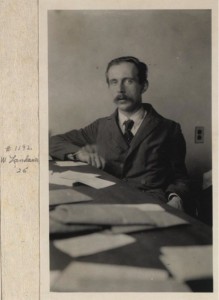
Source: The Embryo Project Encyclopedia
pacifistic attitude that would stay with him and influence many of his future decisions. Thus, rather than direct military service, Landauer volunteered to be a Red Cross nurse. His experiences in the field further solidified his convictions.
In 1919, after returning from his service, he began attending the Universities of Heidelberg, Frankfurt-am-Main and Heidelberg Natural sciences, where he studied under Curt Herbst, a leading scientist in the study of embryonic induction. While there, Landauer investigated the effect of ammonia on the heredity of Echinoderm hybrids. He graduated in 1922 with a Ph.D.
Landauer worked various research positions in Germany and, although he made some small discoveries, the political climate of post-World War I Germany was not conducive to his success. Driven by political unrest, Landauer searched for jobs all over the world, including South Africa and Argentina. Amidst all of this, LC Dunn reached out to Landauer, asking him if he would like to be his assistant at the Storrs Agricultural Experiment Station. Landauer accepted this offer and was hired under a 10-month contract, for which he would make $800. In 1924, Landauer arrived bearing two microscopes and a preserved calf’s head.
Dr. Landauer, in conjunction with Dr. Dunn, primarily studied poultry defects, including characteristics such as rumplessness, chondrodystrophy in chicken embryos, among many other aspects of heredity. Dr. Landauer sought more freedom in his research and, thus, in 1928 he succeeded in splitting from the Department of Poultry Husbandry and founded the Department of Animal Genetics, under which he was the first head and only member.
Perhaps as interesting as Dr. Landauer’s experiments were his political and social activism. In fact, Professors Hugh Clark, Julius Elias, and Peter Bergmann have recently compiled his essays into a book, titled The Antecedents of Nazism: Weimar - The Political Papers of Walter Landauer. As suggested by the title, the papers give insight into the political climate in Germany pre-Nazism. His papers were not limited to Germany’s post-World War I politics, however; Landauer was very free with his pen, expressing his opinions on things such as Prohibition, Henry Ford’s assembly lines, and even campus politics. In 1935, the Board of Trustees of Connecticut State College “voted that military training [was] declared to be a part of college instruction.” The pacifist Landauer took up arms, or rather pens, and wrote to Albert Einstein, Sinclair Lewis, and more than 40 other prominent men and women, asking for their opinions on the subject. Landauer was so consumed by the issue that he had been noted as saying, “I have not been able to work for weeks.”
Dr. Landauer retired from the University of Connecticut in 1964 after 40 years of passionate activism and research.
Edmund Ware Sinnott: cucurbit geneticist, philosopher, and painter
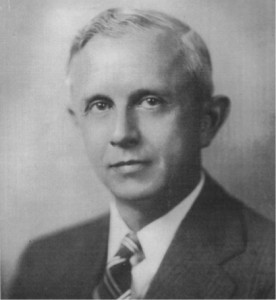
Dr. Edmund Ware Sinnott was a scientist, artist, and philosopher who left his mark in each of his fields of interest. Dr. Sinnott was a native New Englander, born in Cambridge, Massachusetts, February 5, 1888. After his time at Harvard worked at the Bussey Institution studying plant morphology.
Dr. Sinnott soon changed his focus, from descriptions of morphology to
elucidating the genetics of plants. In 1915, Albert F. Blakeslee recommended Dr. Sinnott to be his successor as the Connecticut Agricultural College’s professor of genetics and botany. During his time in Storrs, Sinnott put much of his efforts into studying the genetics of cucurbits (gourds), namely, “the inheritance of shape and size, the cellular basis of these characters, and the effects upon them of various external factors.”
Dr. Sinnott left Storrs in 1928 to become a professor of botany at Columbia. Later, in 1940, he left this position and accepted a professorship at Yale, where soon after, in 1945, he would become the dean of Yale’s graduate school. In 1956 he retired from this
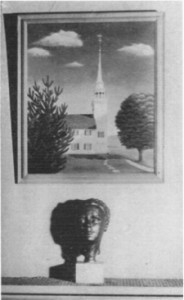
Source: The Scientific Monthly, Vol. 66, No. 1 (Jan., 1948), pp. 5-8
position.
Like many of CAC’s early geneticists, Sinnott was not solely a scientist: he was an artist and writer. He wrote two textbooks, Botany: Principals and Problems, and Principals of Genetics, both of which were used in his classroom. He wrote a few more obscure books, as well—Cell and Psyche, Biology of the Spirit, and Matter, Mind, and Man. These fundamentally philosophical texts make use of both biology and religion to offer nuanced takes on things such as mind-body dualism, man’s true nature, and man’s place in the universe, to name a few.
Dr. Sinnott provided many of the illustrations for his aforementioned textbooks. But he also painted
recreationally. Pictured below is a painting by Dr. Sinnott of the Congregational Church at Farmington, Connecticut. In the same photograph, directly under the painting, is a sculpture that he made of his youngest daughter, Clara.
The Middle Years:
Edgar Zwilling: fowl geneticist and passionate educator
On his way to professorship, Dr. Edgar Zwilling faced seemingly endless obstacles. Zwilling’s parents immigrated to Pittsburgh at the turn of the century in order to escape the anti-Jewish pogroms in Russia. Unfortunately, they did not abandon their strife in their homeland. The flu pandemic of 1918 struck, and both his parents fell ill. Only his mother survived. She moved the family to Brooklyn, New York, at the time a rather inhospitable and unforgiving place to raise six young children. During those years they struggled to subsist.
Zwilling emerged, as a close friend described him, “wise in the less noble ways of men, hardened without bitterness, secure and confident in his self-knowledge, generous and affectionate….”
He entered Brooklyn College of the City of New York in 1929 hoping to start a career as a creative writer. For one reason or another, he switched his aims and dedicated himself wholly to the study of biology. Upon graduation, he attended Columbia graduate school, from which he’d receive his Ph.D. in 1940.
Zwilling started his job search at the tail end of the Great Depression. Needless to say, jobs were scarce, even for blooming Columbia alumni, so Zwilling was very grateful to accept a position in the Genetics Department at Storrs under Walter Landauer. He spent a frequently interrupted nineteen years in Storrs. Zwilling’s work was focused almost exclusively on fowls, namely the embryonic development in normal and mutated chicks. These were prolific, yet arduous years for Zwilling. He did seminal work on chick limb development, but he was also barred from his passion for teaching and from having graduate students due to complications with his administrative supervisors. He did, however, eventually find an outlet for this: he spent eight summers in Woods Hole at the Marine Biology Laboratory, where he taught a course on embryology. He took other leaves from Storrs as well. He accepted a 3-year position in aviation physiology in the U.S. Army Air Force, and he also took a one-year position as the program director for Developmental Biology at the National Science Foundation.
In 1959, Zwilling left Storrs permanently and accepted a professorship at Brandeis University. He had a large influence on the university’s quickly-developing Biology Department. As a chairman, he helped design the department’s buildings, recruited faculty, among other duties. Here he also finally was able to fully pursue his passion for teaching. All the while, Zwilling continued with his research. He stayed here until his death in 1971.
Arthur Chovnick (1927-2011): a pioneering Drosophila melanogaster geneticist
Dr. Arthur Chovnick’s keen leadership, as well as his research on the rosy locus, propelled the University of Connecticut forward to the cutting edge of genetics research. Chovnick was born in 1927 to Fannie and Herman Chovnick. He grew up in Queens, New York and attended Jackson High School. He graduated in 1944 and went on to attend Indiana University, where, after a year, he took a hiatus to serve the United States Navy during WWII. In 1949 he received a B. S. in chemistry.
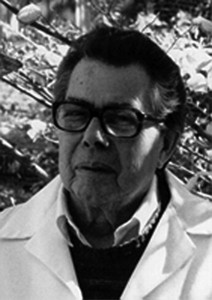
Source: Genetics. “Arthur Chovnick (1927-2011) Geneticist
He then went on to attend Ohio State University, from which he graduated with a Ph.D. in genetics in 1953. Upon graduation, he accepted a position at the University of Connecticut, but soon left for a position as assistant director, and then later director, at the Cold Spring Harbor Biological Laboratory in 1959. But he returned to UConn in 1962 as a Professor of Genetics to later become the head of the Genetics Department. He would stay here until his retirement in 1994.
During his career he did important, pioneering work on the genetics of Drosophila melanogaster, known commonly as the fruit fly. His research showed intragenic recombination occurred in the rosy locus, (the locus responsible for the rosy eye phenotype in Drosophila melanogaster) a profound finding at the time, as intragenic recombination had not been observed in higher eukaryotes. At UConn, Chovnik mapped the rosy locus to a single gene producing xanthine dehydrogenase, the protein responsible for the rosy eye-color in Drosophila melanogaster. This was among the first genes to be mapped in higher eukaryotes.
Dr. Chovnick also held many leadership roles, including such positions as the treasurer of the Genetics Society of America and the associate editor of the scientific journal Genetics. He was also integral to the success of the 23rd Annual National Drosophila research conference, which, in 1982, was held at the University of Connecticut.
If his importance to genetics was not clearly stated enough, his family and colleagues sometimes tell an anecdote that solidifies his esteem: One night Chovnick’s daughter, Lisa, answered a phone call from a man that said he was Francis Crick. Lisa hung up the phone, thinking it was a joke. However, it was not—it was truly Crick. This sort of correspondence was not uncommon; Nobel laureates would correspond with Chovnick often for collaboration and even advice.
After his retirement in 1994, Chovnick spent his remaining years in a very stimulating retirement community, with intellectuals and former academics.
Claire Berg: (1937-1997): a scientist-feminist and transposon researcher
Up until now, men occupied the scene in the field of genetics at UConn, until the arrival of Claire Berg. Berg was born in 1937 to Albert W. and Clara Berg. In 1959 she received her B.S. in plant breeding from Cornell University. She then went on to receive an M.S. (1962) and a Ph.D. (1966) in genetics and botany, from the Universities of Chicago and Columbia, respectively. Upon graduation, she accepted a postdoctoral position at Hammersmith Hospital in London and then later at Institut de Biologie Moleculaire, Université de Geneve in Geneva, Switzerland, where her research was funded by North American Treaty Organization (NATO).
In 1968, Berg joined the University of Connecticut as an assistant professor, later to become a
full professor. Berg’s work focused primarily on “jumping genes,” or transposons, small pieces of DNA that insert itself into new places in the genome. She
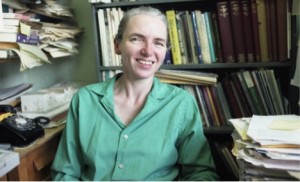
Source: Thomas J. Dodd Center Archives
conducted basic research on these unique sequences, but she also pushed further and used her fundamental work to create a novel sequencing method, using a transposon containing vector, pDUAL. She also studied isoleucine-valine gene clusters in enteric bacteria.
Berg heralded in a new generation of the researcher at UConn. She worked ardently to recruit underrepresented students and researchers to the university’s genetics department, which was historically white and male. Her activism spread outside of the university, as well. She wrote an article titled “Equal Opportunity at NIH,” in which she argued that affirmative action should be a part of the institutes hiring process, because of, again, the white-maleness evident in their ranks.
In 1997 Berg passed, but her legacy is continued with the Claire M. Berg Graduate Fellowship in Genetics, a summer fellowship for female graduate students who shows promise in the field.
Xiangzhong “Jerry” Yang: cloner of the US’s first farm animal
Jerry Yang overcame incredible hardship before becoming the first scientist to clone a farm animal in the United States. Yang was born in 1959 in a small, rural town, Weixan, Hebei, China. Around the time of his birth, his village, Dongcun, and the surrounding province were struck by terrible famine, so terrible that Yang nearly died during infancy.

Source: Los Angeles Times, “Xiangzhong 'Jerry' Yang dies at 49; leading researcher in cloning technology”
Although Yang was an exceptional student, his older brother was chosen by the Communist Party to be the one to attend college. It seemed to Yang that his only option was to take up the family trade of pig farming. However, he was given the opportunity to take the national college entrance exam, on which he did exceedingly well. He was among the 1% of test takers who were allowed to attend college. He attended the Beijing Agricultural University, from which he graduated in 1982. He then went on to attend graduate school in the United States and received his Ph.D. in embryology from Cornell University in 1990, whereupon he accepted a postdoctoral position. He later joined the university’s staff as the program director of Cornell’s animal science department. While there, his research dealt primarily with the cloning of rabbits, but for the most part, it proved to be unfruitful. He never successfully cloned a rabbit.
In 1996, he joined the University of Connecticut as an associate professor of animal science, the same year that Dolly was successfully cloned. In 1999, Yang succeeded in cloning the famed Amy, the first cow and, furthermore, the first farm animal cloned in the United States. Yang did this by somatic nuclear transfer, a method by which one enucleates an ovum and injects a somatic nucleus, thereby reprogramming the ovum.
Dr. Yang also helped found the university’s Center for Regenerative Biology, of which he became the director. Here, Dr. Yang did work on personalized medicine. He envisioned a method by which patients would receive their own cells, grown up in a lab by means of human cloning.
Using Amy, as well as other successive clones, Dr. Yang helped to quell doubts about premature aging and the safety of consuming cloned animals. He found that the telomere lengths in cloned animals were not shortened, and thus the cellular age of the clones was not affected. Also, he provided large amounts of data to the FDA supporting the fact that it was safe to consume clones. Yang was also the first to show that cloned farm animals could successfully reproduce.
Dr. Yang passed away in 2015 at age 49.
Today:
Linda Strausbaugh: educator and researcher of fungal communities, evolution of multigene families, and forensic genetics
Professor Strausbaugh is an accomplished scholar and educator. Dr. Strausbaugh joined the University of Connecticut in 1980, after a Ph.D. in Genetics from
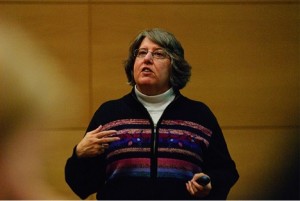
Source: UConn Today, “Genetics Expert Makes Science Real For Students”
Wesleyan University and postdoctoral work at Johns Hopkins and the University of Pennsylvania. Her research interests spanned diverse topics, from the structure, function, and evolution of multigene families in Drosophila to forensic genetics. A recent direction in her laboratory has been the study of fungal communities in relation to human disease and health, where she discovered that the genus Malassezia is prominent in the human mouth. She also carried out work on historical genetics, for which she gained some publicity. In a collaboration with State Archaeologist and UConn professor, Dr. Nick Bellantoni, she debunked the theory that a skull found in Hitler’s bunker belonged to Hitler himself. After some DNA typing, Professor Strausbaugh confirmed Professor Bellantoni’s suspicion that the skull belonged to a young woman. All of this later found its way into the History Channel’s documentary Hitler’s Escape.
As an educator, Strausbaugh did equally impressive work. She created UConn’s Professional Science Masters in Applied Genomics and taught several genetics courses, one of which was named “Best on Campus” by the Boston Globe. She also received the UConn alumni association award for faculty excellence in teaching in 2009.
Now Professor Emerita, she continues to be active in research collaborations and is on the board of directors of the National Professional Science Master’s Association.
Current Genetics group at the University of Connecticut Storrs Campus
Today, the traditions in research and training excellence in eukaryotic genetics live on. A core of faculty within the Genetics and Genomics area of concentration in the department of molecular and cell biology serves as the nexus for undergraduate and graduate training, with research interests spanning from genome evolution to chromosome structure, and from stem cell biology to gene expression. In 2016, Leighton Core, John Malone, Barbara Mellone, Craig Nelson, Michael O’Neill, Rachel O’Neill, and Ping Zhang are following these scientists’ footsteps by pursuing diverse eukaryotic genetics research while training the future generation of eukaryotic geneticists and genomicists at UConn Storrs. The group is also part of the recently established Institute for Systems Genomics (ISG), whose mission is to “promote world-class research and training in genomics and personalized medicine.” The ISG connects nearly one hundred researchers from UConn Storrs, the UConn Health Center, and the Jackson Laboratory for Genomic Medicine in Farmington, exemplifying the interdisciplinary nature and extraordinary potential of modern genetics and genomics research.